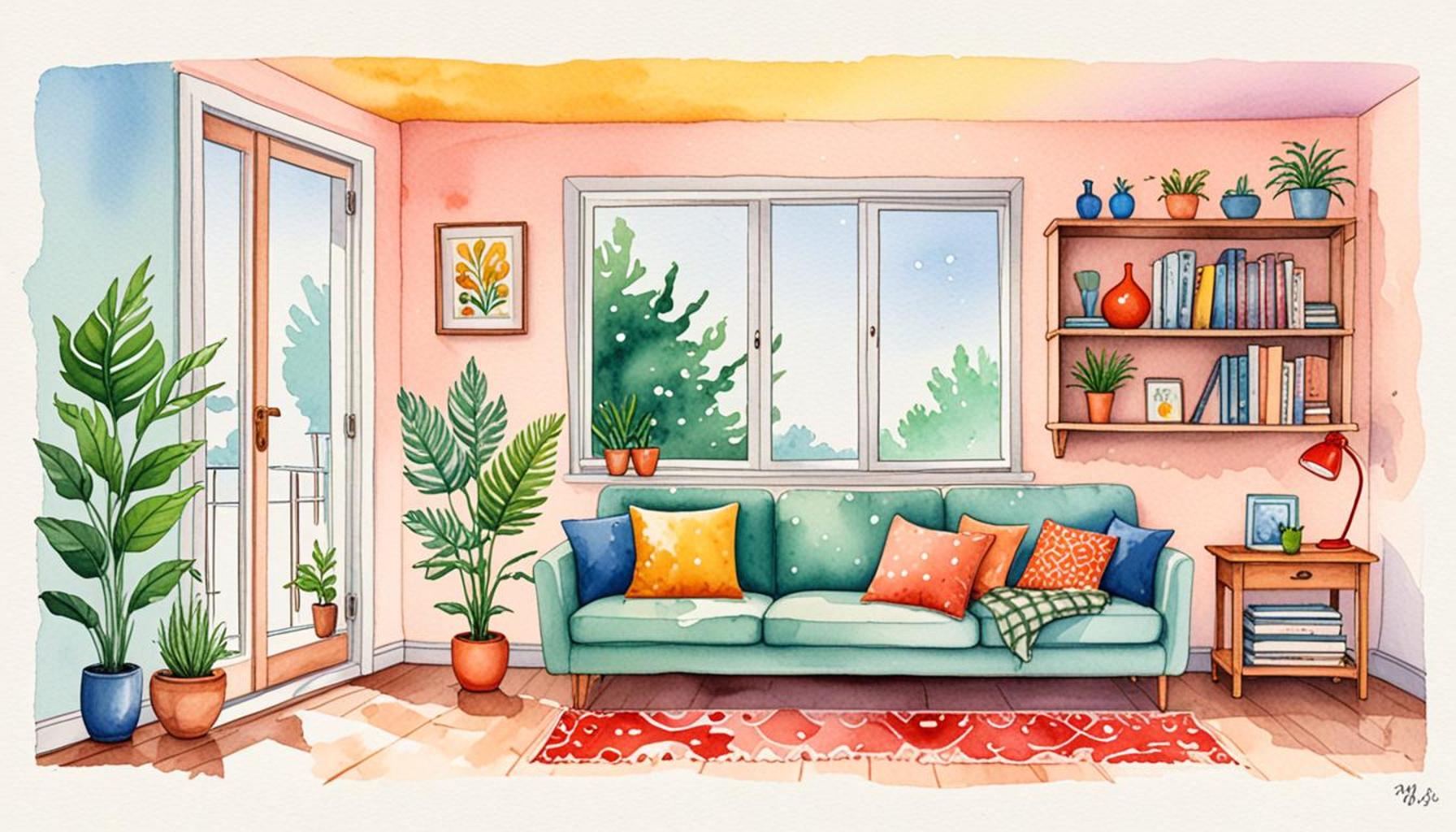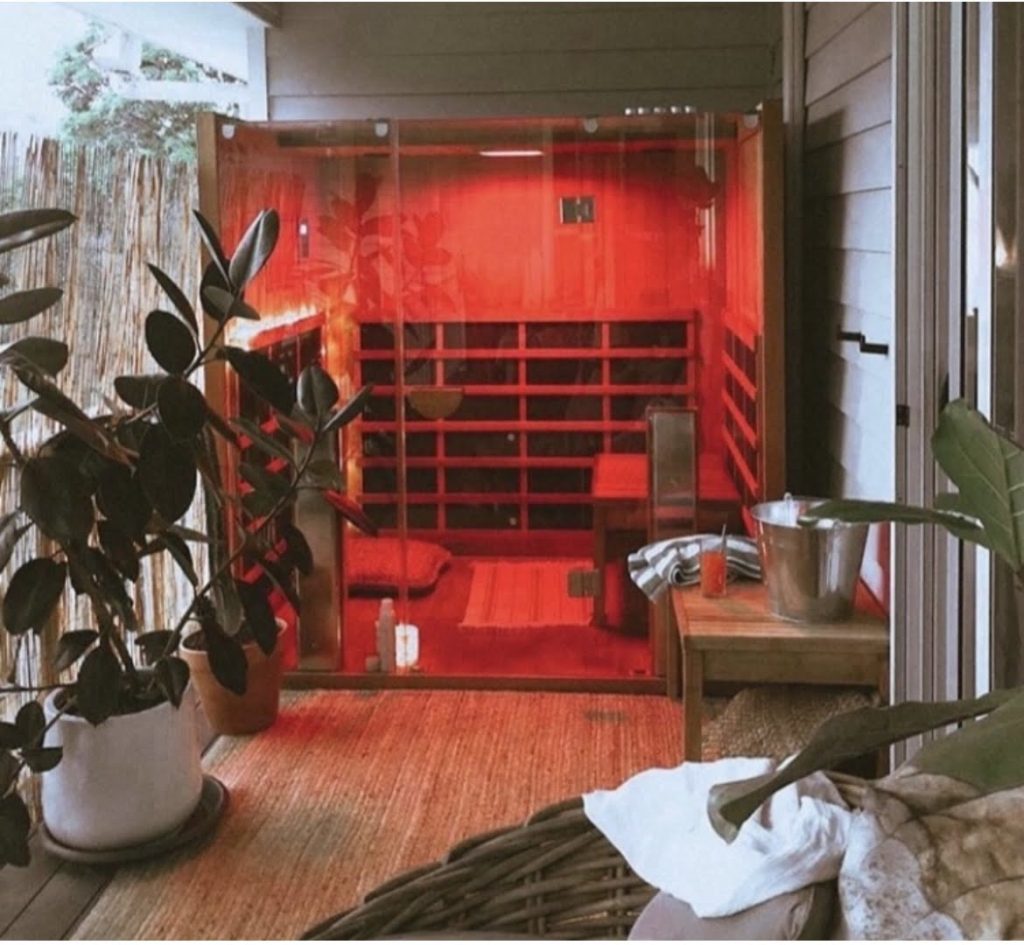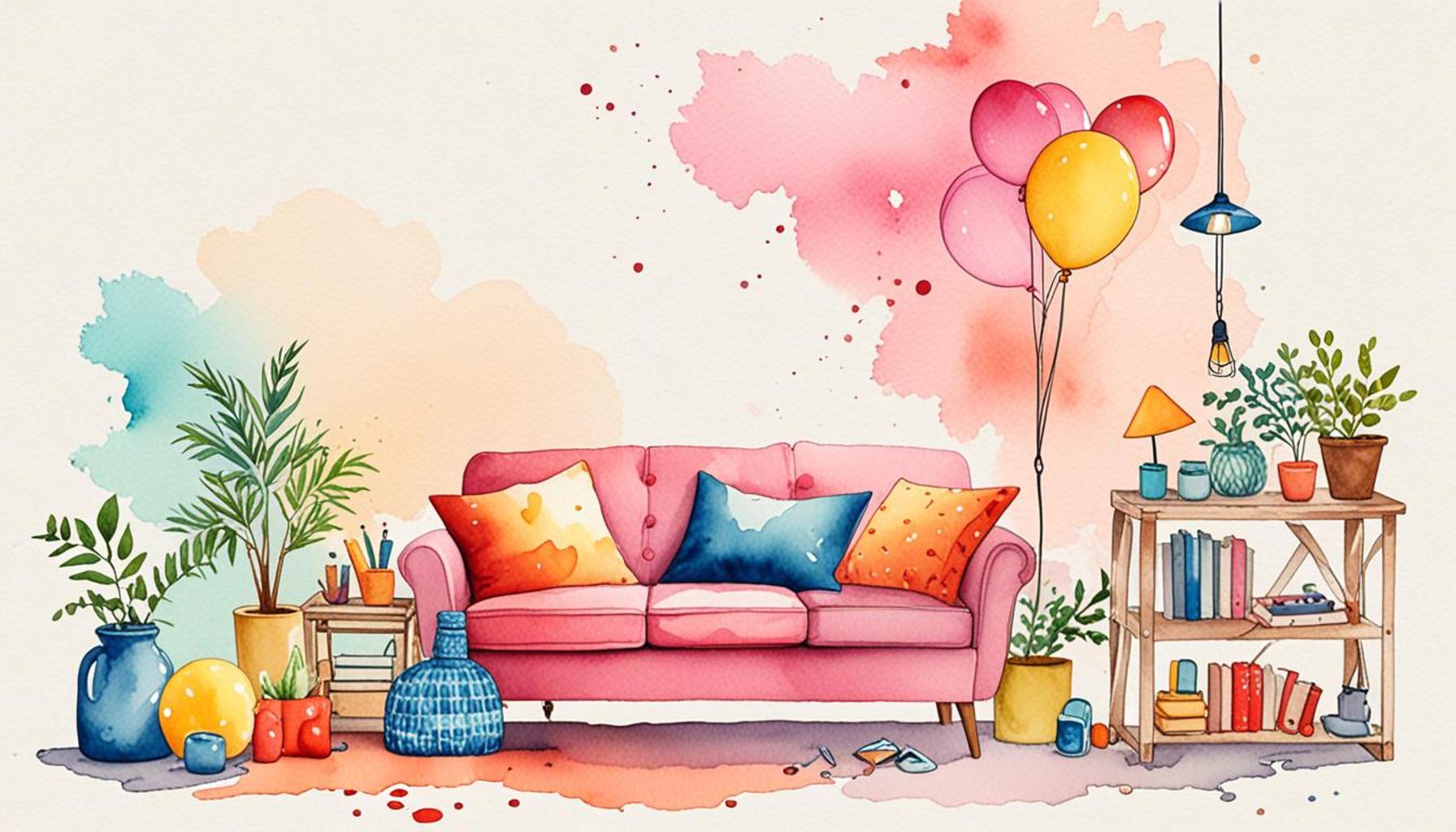The Connection Between Simple Spaces and Mental Well-Being: Creating Sanctuaries at Home

Understanding the Importance of Simple Spaces
In today’s fast-paced world, the significance of mental well-being is more crucial than ever. The chaotic nature of our daily lives, especially in bustling cities like Lagos or Port Harcourt, can lead to overwhelming stress and anxiety. Creating a peaceful home environment is not just a luxury but a necessity for enhancing our mood and overall health. Simple spaces, characterized by minimalism and organization, offer a sanctuary amid this chaos, serving as a refuge where one can recharge and find tranquility.
Why Simple Spaces Matter
- Reduction of Clutter: Clutter can lead to stress and anxiety. A disorganized room often translates to a disorganized mind. Simplified spaces encourage a sense of calm, creating an environment where individuals can think clearly and make choices with ease.
- Enhanced Focus: Less visual distraction leads to improved concentration and productivity. For students and professionals alike, a tidy, simple environment facilitates deeper engagement with tasks at hand, potentially enhancing their effectiveness and creativity.
- Inviting Nature Indoors: Incorporating plants or natural elements promotes relaxation and tranquility. Not only do plants improve air quality, but they also add a touch of nature’s beauty, which can soothe the mind and elevate mood.
Research indicates that individuals who live in well-organized homes often experience better emotional health. This may stem from the fact that a clear space allows for clearer thoughts, leading to improved mental clarity and reduced feelings of overwhelm. This connection raises an essential question: How can we cultivate these sanctuaries in our living spaces?
Practical Ways to Create Sanctuaries
- Choose Calming Colors: Opt for soft hues like pastel blues and greens, which can create an inviting atmosphere conducive to relaxation. Such shades can be easily incorporated into wall paint, decor, or furnishings.
- Incorporate Personal Touches: Displaying art or photographs that resonate with personal experiences enhances emotional attachment. This not only personalizes your space but also serves as a reminder of positive memories, fostering joy.
- Establish Functional Areas: Create dedicated spaces for work, relaxation, and hobbies to maintain a balanced lifestyle. For instance, having a small reading nook or workspace can help you compartmentalize activities, allowing for a more structured daily routine.
Exploring the connection between simple spaces and mental health can lead to profound insights about our well-being. By understanding and implementing these principles, individuals can transform their homes into true sanctuaries. These adjustments don’t require extensive resources; even small changes can make a significant impact on your mental state and overall quality of life. Embrace the journey towards creating a serene and harmonious living environment, and witness the positive ripple effects it can have on your daily experience.
YOU MAY ALSO LIKE: Read read another article
Transforming Your Living Space
Creating a sanctuary at home begins with understanding the spaces we inhabit and how they affect our mental well-being. In Nigeria, where life can be exceptionally busy and overwhelming, having a place that fosters peace and relaxation is imperative for emotional stability. By transforming our living spaces into simple, serene environments, we can pave the way for improved mental health. So, what steps can be taken to achieve this transformation?

The Role of Organization
Being organized goes beyond mere aesthetics; it deeply influences our mental state. Clutter can be a significant source of distraction and stress, creating a barrier to productivity and peace. Evidence suggests that individuals living in cluttered environments often report elevated levels of anxiety. Conversely, well-organized spaces contribute to a sense of calm and control. To take advantage of this concept, consider implementing the following strategies:
- Develop a cleaning routine: Establishing a regular cleaning schedule makes it easier to maintain organization. This maintenance is essential to prevent the accumulation of clutter, allowing you to enjoy your space without the stress of disarray.
- Declutter legitimately: Go beyond the surface by sorting through items that no longer serve a purpose. Organizations such as decluttering groups can provide support, making the process less daunting. For instance, holding a community yard sale can simultaneously declutter and create social engagement.
- Utilize smart storage solutions: Embrace innovative storage options like multi-functional furniture or under-bed containers. These not only save space but also help keep frequently used items accessible yet out of sight, promoting a harmonious environment.
The key to these changes lies in small, actionable steps—even slight alterations can significantly improve your surroundings. For example, an organized bookshelf or a neat coffee table can serve as a focal point for calmness in your living room. Such improvements may promote deeper mental clarity, enabling individuals to focus on tasks more effectively and reduce instances of feeling overwhelmed.
Creating a Breath of Fresh Air
Incorporating elements of nature into your home is another effective way to foster mental well-being. Studies have shown that exposure to nature can lower stress levels and boost mood. Simple steps such as bringing in plants or optimizing natural light can have transformative effects. For instance:
- Choose low-maintenance plants: Opt for resilient plants like the snake plant or peace lily, which thrive with minimal care and improve air quality, creating a healthier indoor environment.
- Maximize natural light: Open curtains during the day to allow sunlight to flood your space. Natural light has been linked to increased serotonin levels, contributing to a more positive mood.
- Create an outdoor retreat: If space allows, consider setting up a small patio or balcony garden with seating. This can serve as a getaway, fostering mindfulness and relaxation away from daily stressors.
As we explore the profound connection between simple spaces and mental well-being, it becomes evident that our living environments hold immense power over our mental state. By taking steps to transform our homes into sanctuaries, we cultivate not just a space for respite but a foundation for enhanced emotional health and overall quality of life.
The Importance of Simple Spaces for Mental Health
Creating a sanctuary at home can significantly enhance mental well-being. Simple spaces promote a sense of calmness and clarity, allowing individuals to reconnect with themselves. Minimalistic environments are known to reduce distractions, letting one’s mind focus on essential tasks and activities.Moreover, incorporating natural elements into these spaces, such as plants or natural light, can further elevate mood and reduce stress levels. Studies indicate that individuals who spend time in well-designed, uncluttered environments report lower levels of anxiety and higher satisfaction with their living conditions. Accessibility to serene settings at home fosters mindfulness practices, inviting individuals to engage in meditation or yoga within their personal sanctuaries. This practice not only nurtures mental health but also cultivates creativity and productivity, leading to a more fulfilling life.Finally, creating personal sanctuaries can serve as an expression of individuality. Tailoring a space to reflect one’s personality through colors, textures, and meaningful decor can deepen the emotional connection to the environment, reinforcing a sense of belonging and peace.
| Advantage | Explanation |
|---|---|
| Simplicity Reduces Stress | Simple designs create calm atmospheres, decreasing feelings of overwhelm. |
| Connection to Nature | Natural elements in design enhance mood, promoting mental clarity. |
| Creative Expression | Personalized spaces foster individuality and enhance emotional well-being. |
Incorporating these principles into home design not only cultivates a peaceful retreat but also addresses critical aspects of mental health, emphasizing the fundamental connection between our environments and our emotional states. This exploration into the art of space simplicity serves as a powerful reminder of the potential for our homes to nurture mental well-being.
YOU MAY ALSO LIKE: Read read another article
Personalizing Your Space for Comfort and Clarity
Once you have implemented organization and integrated elements of nature into your home, the next step in creating a haven is personalizing your space. Personalization fosters a sense of ownership and connection to the environment, which can significantly enhance mental well-being. In Nigeria, where cultural heritage and personal identity intertwine, this step takes on an even deeper meaning. To create a sanctuary uniquely reflective of you, consider the following techniques:
Incorporating Cultural Elements
Your living space should resonate with your identity and heritage. Nigerian art and crafts can serve as both decor and a reminder of your roots, bringing comfort and pride. Embrace traditional fabrics, wall hangings, or sculptures that evoke cherished memories and celebrate your culture. For example:
- Display art from local artists: Investing in artworks that depict the vibrancy of Nigerian life not only beautifies your space but also supports local talent, contributing to the community’s economy.
- Utilize traditional textiles: Throw pillows or drapes made from local fabrics such as Aso Oke or Ankara can infuse your space with color and warmth while reminding you of your cultural connections.
- Create a memory wall: Dedicate a section of your home to family photos and mementos that tell your story, serving as a constant source of inspiration and emotional comfort.
By incorporating these cultural elements, you will enhance both the aesthetic appeal and the emotional resonance of your living environment.
Mindful Decor Choices
In addition to culturally relevant items, consider the psychology of color and texture in your decor choices. The colors we surround ourselves with can significantly impact our mood and cognitive function. Research indicates that certain colors can evoke specific emotional responses. Here are some ideas to help you choose wisely:
- Opt for soothing colors: Shades of blue and green are known to promote relaxation and calmness. Using these tones in your living or bedroom walls can help to create a tranquil atmosphere.
- Incorporate soft textures: Materials like cotton, linen, and wool can foster coziness in your home. By using these in your furnishings, such as cushions or rugs, you can increase your feeling of comfort.
- Avoid harsh lighting: Swap out bright fluorescent bulbs for warm lighting or dimmable options to create a more inviting space that naturally promotes relaxation.
Additionally, personal objects that bring you joy—such as books, photographs from memorable trips, or souvenirs—can further enhance the individual character of your sanctuary. These personal touches not only make your space inviting but also serve as tools for mindfulness, allowing you to anchor your thoughts and emotions positively.
The Impact of Decluttering Digital Space
Today’s world is not only filled with physical clutter; digital clutter can weigh heavily on our minds as well. With a growing reliance on technology, managing your digital space is crucial to achieving mental tranquility. Consider these tips to declutter your digital realm:
- Organize files systematically: Whether it’s on your computer or phone, implementing a clear file structure can streamline access to important documents, reducing digital stress.
- Reduce screen time: Set boundaries around your digital device usage. By designating tech-free zones in your home, such as the bedroom or dining area, you promote unguarded moments of calm and connectedness.
- Curate social media feeds: Follow accounts that uplift and inspire rather than drain your energy. A positive digital atmosphere can lead to healthier emotional states.
By decluttering not just your physical surroundings, but also your digital life, you create a comprehensive sense of sanctuary that promotes mental clarity and balance.
LEARN MORE: This related article may interest you
Creating Your Unique Sanctuary
In conclusion, the connection between simple spaces and mental well-being is both profound and actionable. As we’ve explored, creating sanctuaries at home involves more than just aesthetics; it engages cultural identity, personal touches, and an awareness of our mental landscapes. By incorporating elements of nature, organizing your surroundings, and selecting mindful decor, you can transform your living space into a source of peace and positivity. This journey should be personal, reflective of your unique identity, especially in the rich tapestry of Nigerian culture where heritage plays a fundamental role in self-expression.
Moreover, as our lives increasingly intertwine with digital realms, attending to digital clutter is an essential extension of curating our physical space. Integrating a tech-free environment and selecting supportive online connections can significantly influence your peace of mind. Ultimately, your home should be a personal oasis tailored to foster mental clarity, reduce stress, and enhance emotional well-being.
As you embark on this journey, remember: creating your unique sanctuary is not a one-time task but a continuous process of evolution and refinement. Every piece, every color choice, and every moment spent in your sanctuary can deepen your sense of comfort and promote overall mental wellness. Explore, personalize, and invest time in crafting your haven – your mental well-being deserves it.



